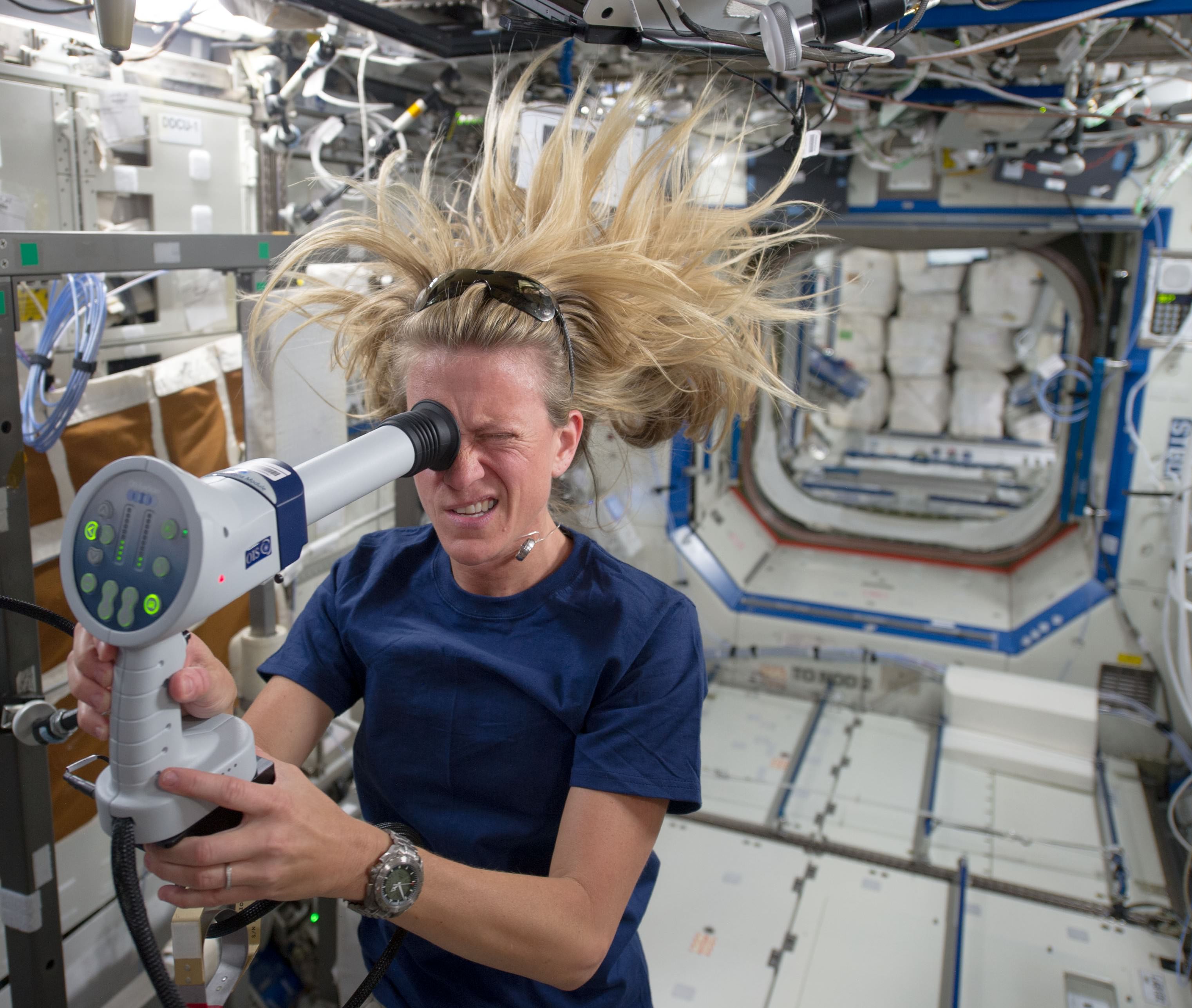How does microgravity affect your health? One of the chief concerns of NASA astronauts these days is changes to eyesight. Some people come back from long-duration stays in space with what appears to be permanent changes, such as requiring glasses when previously they did not.
And the numbers are interesting. A few months after NASA told Universe Today that 20% of astronauts may face this problem, a new study points out that 21 U.S. astronauts that have flown on the International Space Station for long flights (which tend to be five to six months) face visual problems.
These include “hyperopic shift, scotoma and choroidal folds to cotton wool spots, optic nerve sheath distension, globe flattening and edema of the optic nerve,” states the University of Houston, which is collaborating with NASA on a long-term study of astronauts while they’re in orbit.

NASA is flying an instrument on board the International Space Station that does optical coherence tomography, which acts like a microscope on the eye. The technology looks at things such as pressure in the eye and changes in the optic nerve and retinal structures.
The collaboration with the University of Houston recently won Heidelberg Engineering’s annual 2014 Xtreme Research Award. In the long term, the researchers involved are hoping to figure out what changes to make for long-duration missions. One example could be changing carbon dioxide levels on the station, if that is found to play a role.
Long-term health considerations will be one thing examined closely when an astronaut and a cosmonaut spend a year on the International Space Station in 2015, with their milestone bringing them in a small group of people who have spent a year or more consecutively in space.
Source: University of Houston


This seems to be one of the very few known permanent damages from half a year in microgravity. Maybe a specific cure for this can be invented.
But overall, microgravity has been proven to cause many different potentially severe health problems. A relevant time period is the over two years a mission to, on and from Mars would take. If Mars gravity, 38% of that on Earth, turns out to be unhelpful, Mars will be pretty useless as a destination for humanity this century. Then a Mars base would have to use centrifugal forces and be much more of a challenge to construct than landing a habitable module. A space station should rotate to simulate Mars gravity to study its effects. And of course to help astronauts get rid of all these nasty health problems with microgravity.
A space station should be a prototype of a Mars spacecraft and a Mars base (and of course a Moon base). Because some people will go to Mars, no matter what. And it has already been convincingly proven that microgravity is not a practical way to do that if we want healthy explorers to arrive there. It’s time to have a look at partial gravity.
There is no long-term experimental data on partial gravity yet. For that we will need a moon base or rotating station, either of which will be technically challenging. As you point out, people will go to Mars no matter what, including health problems. A Mars mission would itself provide some good partial gravity data, since the astronauts would likely be spending several months in a 38% gravity environment on the Martian surface.
Key here will be the long duration/one year mission planned for 2015.
http://www.nasa.gov/mission_pages/station/research/news/one_year_mission.html